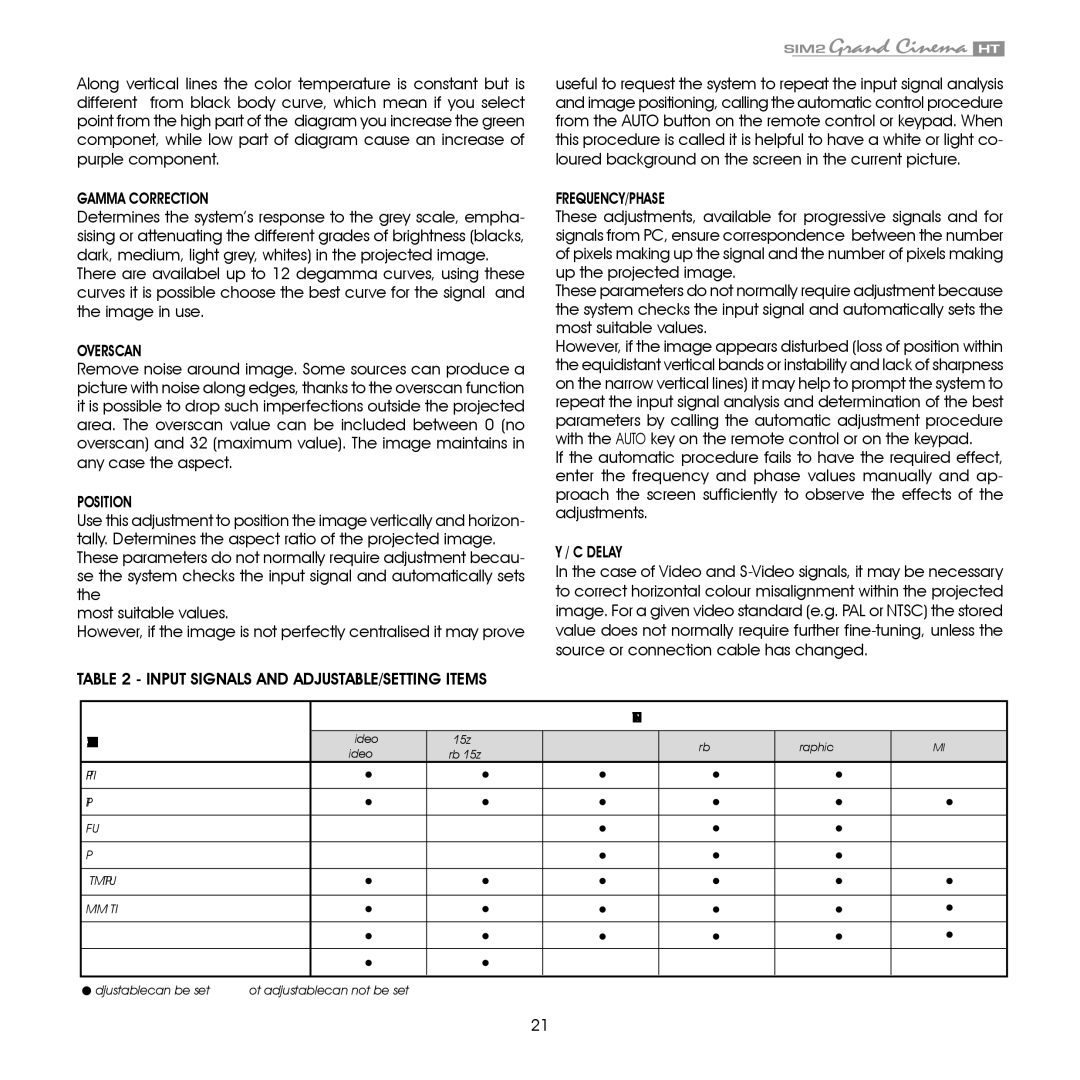
Along vertical lines the color temperature is constant but is different from black body curve, which mean if you select point from the high part of the diagram you increase the green componet, while low part of diagram cause an increase of purple component.
Gamma Correction
Determines the system’s response to the grey scale, empha- sising or attenuating the different grades of brightness (blacks, dark, medium, light grey, whites) in the projected image.
There are availabel up to 12 degamma curves, using these curves it is possible choose the best curve for the signal and the image in use.
OVERSCAN
Remove noise around image. Some sources can produce a picture with noise along edges, thanks to the overscan function it is possible to drop such imperfections outside the projected area. The overscan value can be included between 0 (no overscan) and 32 (maximum value). The image maintains in any case the aspect.
Position
Use this adjustment to position the image vertically and horizon- tally. Determines the aspect ratio of the projected image. These parameters do not normally require adjustment becau- se the system checks the input signal and automatically sets the
most suitable values.
However, if the image is not perfectly centralised it may prove
TABLE 2 - INPUT SIGNALS AND ADJUSTABLE/SETTING ITEMS
useful to request the system to repeat the input signal analysis and image positioning, calling the automatic control procedure from the AUTO button on the remote control or keypad. When this procedure is called it is helpful to have a white or light co- loured background on the screen in the current picture.
Frequency/phase
These adjustments, available for progressive signals and for signals from PC, ensure correspondence between the number of pixels making up the signal and the number of pixels making up the projected image.
These parameters do not normally require adjustment because the system checks the input signal and automatically sets the most suitable values.
However, if the image appears disturbed (loss of position within the equidistant vertical bands or instability and lack of sharpness on the narrow vertical lines) it may help to prompt the system to repeat the input signal analysis and determination of the best parameters by calling the automatic adjustment procedure with the AUTO key on the remote control or on the keypad.
If the automatic procedure fails to have the required effect, enter the frequency and phase values manually and ap- proach the screen sufficiently to observe the effects of the adjustments.
Y / C Delay
In the case of Video and
|
|
|
| INPUTS |
|
| |
ADJUSTEMENTS | Video | RGBS 15kHz | RGBS |
| YCrCb | Graphic RGB | HDMI™ |
| YCrCb 15kHz |
|
|
|
|
| |
POSITION |
|
|
|
|
|
| - |
|
|
|
|
|
|
|
|
ASPECT |
|
|
|
|
|
|
|
|
|
|
|
|
|
|
|
FREQUENCY | - | - |
|
|
|
| - |
|
|
|
|
|
|
|
|
PHASE | - | - |
|
|
|
| - |
|
|
|
|
|
|
|
|
COLOR TEMPERATURE |
|
|
|
|
|
|
|
|
|
|
|
|
|
|
|
GAMMA CORRECTION |
|
|
|
|
|
|
|
|
|
|
|
|
|
|
|
OVERSCAN |
|
|
|
|
|
|
|
|
|
|
|
|
|
|
|
Y/C DELAY |
|
| - |
| - | - | - |
|
|
|
|
|
|
|
|
![]() Adjustable/can be set - Not adjustable/can not be set
Adjustable/can be set - Not adjustable/can not be set
21
